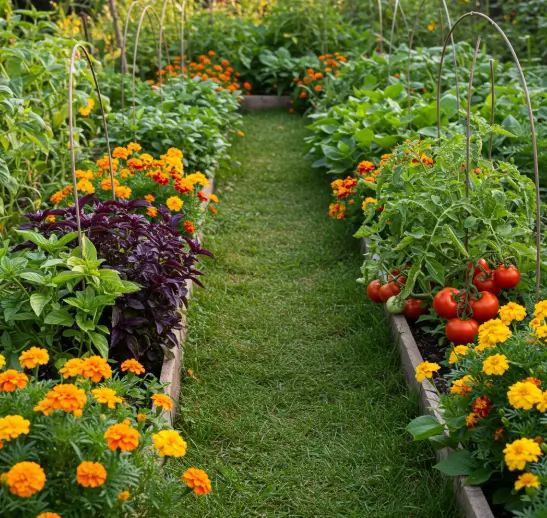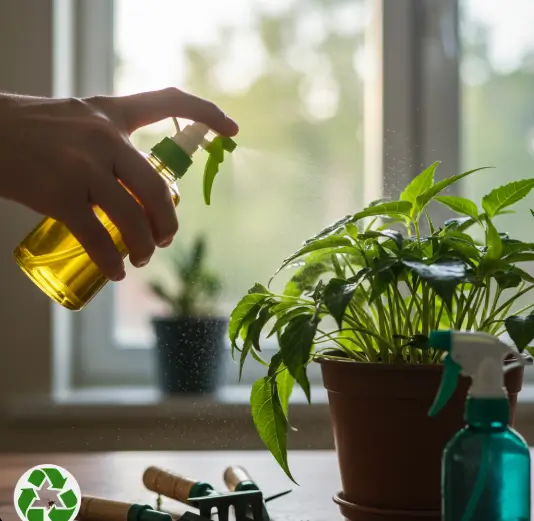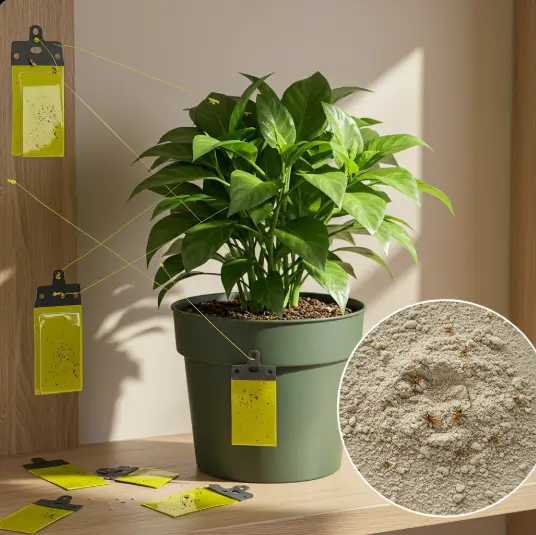Growing up, my grandmother’s backyard was a sanctuary. I remember the scent of fresh basil mingling with the aroma of marigolds, and the vibrant tomatoes she would pick right before dinner. But what stood out most wasn’t the yield—it was how she battled pests without ever reaching for a chemical spray. She had her rituals: rinsing new plants, planting garlic around her roses, and always, always checking the underside of leaves. Inspired by her methods, I’ve spent years perfecting my approach to natural pest plant care. This guide combines those lessons and the best modern practices to help you protect your plant’s health.
Table of Contents
Understanding Common Plant Pests
Identifying Common Indoor and Outdoor Plant Pests
From aphids and whiteflies to fungus gnats and spider mites, plant pests come in many forms. Outdoor gardens are especially susceptible to caterpillars, beetles, and slugs, while indoor plants often suffer from scale, mealybugs, and thrips.
Recognizing Signs of Pest Infestations
Yellowing leaves, sticky residue (honeydew), black sooty mold, curled leaves, or tiny bite marks are telltale signs. Webbing and sudden drooping can also signal trouble.
Impact of Pests on Plant Health
Unchecked infestations can lead to nutrient loss, stunted growth, and even plant death. Pests not only feed on plants but also often introduce secondary infections like mold or viruses.

Preventive Measures in Pest Plant Care
Quarantining New Plants to Prevent Pest Introduction
New plants should be kept separate for a minimum of two weeks. Inspect leaves and soil closely. Rinse foliage and repot with fresh soil if needed.
Maintaining Optimal Plant Health to Deter Pests
Healthy plants are more resistant. Ensure adequate light, water, drainage, and nutrition. Stress-free plants emit fewer attractants for pests.
Importance of Cleanliness and Hygiene in Plant Care
Dead leaves, dirty pots, and overwatered soil attract pests. Regularly clean tools and wipe down pots and trays to minimize risk.
Natural Remedies for Pests and Plant Care
Homemade Sprays: Garlic, Chili, and Soap Solutions
Mix 1 tbsp of mild dish soap, 1 tsp of chili powder or garlic juice, and a quart of water. Spray directly onto pests, avoiding blooms.
Utilizing Neem Oil and Diatomaceous Earth
Neem oil disrupts pest life cycles. Use weekly as a preventive spray. Diatomaceous earth dehydrates soft-bodied insects—sprinkle it on dry soil.
Companion Planting with Pest-Repellent Flowers
Marigolds deter nematodes. Basil wards off flies. Planting these around vegetables helps create a protective ecosystem.

Physical and Mechanical Pest Control Methods
Using Barriers: Netting and Tulle to Protect Plants
Floating row covers, mesh, and netting shield plants from airborne insects and crawling bugs without chemical use.
Manual Removal Techniques for Visible Pests
Use gloves or tweezers to remove caterpillars or beetles. A blast of water helps dislodge aphids. Sticky traps catch fungus gnats and whiteflies.
Employing Traps for Snails and Slugs
Set beer traps in shallow containers or lay copper tape around beds to repel snails and slugs naturally.
Eco-Friendly Pest Control Products
Selecting Organic Insecticides for Safe Application
Choose OMRI-listed (Organic Materials Review Institute) products like pyrethrin or Spinosad. These target pests without harming pollinators.
And for more about Organic materials, check this article ( click here )
Understanding the Role of Insecticidal Soaps
Insecticidal soap penetrates soft-bodied pests’ shells, causing dehydration. It is most effective when applied in the early morning or late evening.
Benefits of Using Baking Soda in Pest Management
A mix of 1 tsp baking soda, a drop of dish soap, and water acts as a fungicide and repels pests like spider mites.
Specific Strategies for Houseplants
Addressing Common Houseplant Pests: Mealybugs, Whiteflies, and Thrips
Inspect the undersides of leaves weekly. Use alcohol-dipped cotton swabs to remove visible bugs. Yellow sticky traps work for flying pests.
Adjusting Humidity and Air Circulation to Prevent Infestations
Pests thrive in stagnant, overly humid air. Use fans and avoid clustering plants too closely.
Regular Inspection and Maintenance Practices
Check soil moisture before watering, clean pots monthly, and prune affected leaves immediately.
(Click here to learn more about Housplant care.)

FAQs on Pest Plant Care
How to treat new plants for pests? Quarantine for 1–2 weeks, rinse leaves, check the soil for pests, and treat with neem oil or insecticidal soap.
What is the best pest treatment for houseplants? Neem oil and insecticidal soaps are both reliable and non-toxic options. Use sticky traps and prune affected areas as needed.
How to keep pests out of potted plants? Avoid overwatering, inspect regularly, and top the soil with sand or diatomaceous earth to deter fungus gnats.
What can I apply to my plants to deter pests? Try a DIY spray: mix garlic or chili extract with mild soap and water. Neem oil is another excellent option.


Conclusion
Caring for your plants doesn’t have to mean relying on harsh chemicals. With a thoughtful, proactive approach to pest plant care, you can maintain a vibrant, thriving garden naturally. From the preventative measures passed down by generations to today’s eco-friendly solutions, we now have more tools than ever to protect our green spaces safely. Remember, a healthy plant is a resilient one. Keep observing, keep learning, and let your garden be a reflection of care, patience, and respect for nature’s balance.
“Happy reading! And don’t skip our article about gardening for beginners.”
